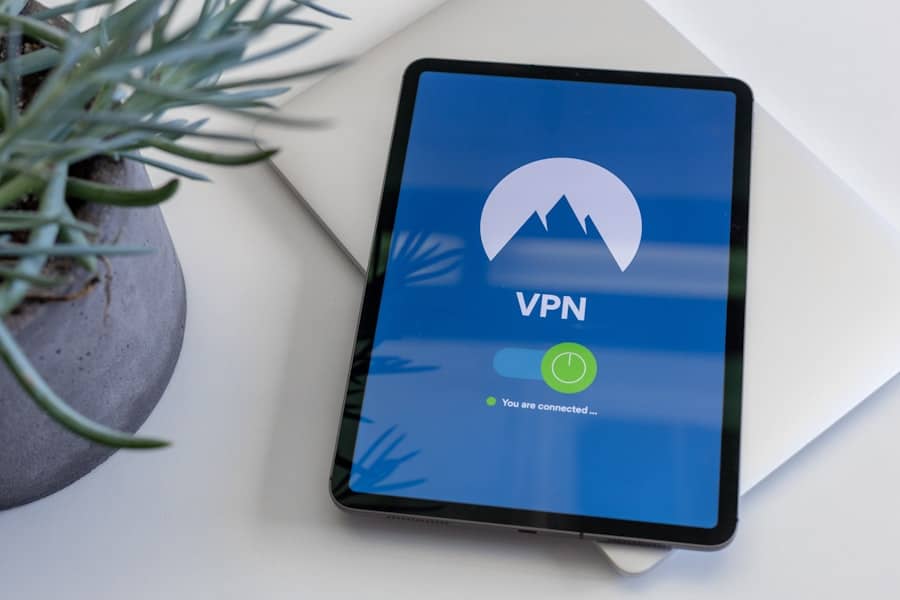Cyber security is crucial in the modern digital era. As technology becomes increasingly integrated into personal, professional, and financial aspects of life, protecting sensitive information from cyber threats is more important than ever. Cyber security is vital for safeguarding data, preventing unauthorized access, and ensuring privacy and safety for individuals and organizations.
Without adequate cyber security measures, people and businesses risk falling victim to cyber attacks, data breaches, identity theft, and financial fraud. These incidents can have severe consequences, including financial losses, reputational damage, and legal repercussions. It is therefore essential for individuals and organizations to prioritize cyber security to mitigate risks associated with cyber threats and protect digital assets.
Cyber security also plays a critical role in maintaining the integrity and reliability of digital systems and networks. Implementing robust cyber security measures allows organizations to ensure the availability and functionality of their digital infrastructure, minimizing potential disruptions caused by cyber attacks and unauthorized access. Additionally, cyber security is essential for maintaining trust and confidence in digital transactions and communications.
With the increasing prevalence of online interactions and e-commerce, individuals and businesses require assurance that their digital activities are secure and protected from malicious actors. Investing in cyber security is thus not only a matter of protecting data and assets but also a means of fostering trust and reliability in the digital ecosystem.
Key Takeaways
- Cyber security is crucial for protecting sensitive data and preventing cyber attacks
- Common cyber security threats include malware, phishing, and ransomware
- Best practices for cyber security include using strong passwords, keeping software updated, and implementing multi-factor authentication
- Technology plays a key role in cyber security through tools like firewalls, encryption, and intrusion detection systems
- Cyber security in the workplace involves training employees, implementing security policies, and conducting regular security audits
- Personal cyber security involves being cautious online, using secure networks, and regularly updating security software
- The future of cyber security will involve advancements in artificial intelligence, machine learning, and automation to combat evolving cyber threats
Common Cyber Security Threats
Malware: A Common Cyber Security Threat
Malware, or malicious software, is designed to infiltrate and damage computer systems. It can take many forms, including viruses, worms, ransomware, and spyware. Malware can be distributed through email attachments, infected websites, or removable storage devices, making it a significant threat to cyber security.
Phishing and Social Engineering Attacks
Phishing is another prevalent cyber security threat that involves the use of deceptive emails or websites to trick individuals into disclosing sensitive information. Phishing attacks often target unsuspecting individuals or employees within organizations, making it crucial to educate users about recognizing and avoiding such scams. Social engineering attacks, such as pretexting or baiting, exploit human psychology to manipulate individuals into divulging confidential information or performing actions that compromise security.
Ransomware: A Devastating Cyber Security Threat
Ransomware is a significant cyber security threat that involves the encryption of a victim’s data by cyber criminals who demand a ransom in exchange for restoring access. Ransomware attacks can have severe consequences, including data loss, financial extortion, and operational disruptions. By understanding these common cyber security threats, individuals and organizations can take proactive measures to defend against potential attacks and minimize their susceptibility to exploitation.
Best Practices for Cyber Security

Implementing best practices for cyber security is essential for mitigating the risks associated with cyber threats and safeguarding digital assets. One fundamental practice is to regularly update software and operating systems to patch known vulnerabilities and strengthen defenses against potential exploits. Additionally, using strong, unique passwords for different accounts and enabling multi-factor authentication can significantly enhance security by reducing the likelihood of unauthorized access.
It is also crucial to back up data regularly to prevent data loss in the event of a cyber attack or system failure. Furthermore, educating employees and individuals about cyber security awareness and best practices is essential for creating a culture of security within organizations and communities. Training programs can help users recognize potential threats, avoid phishing scams, and understand their role in maintaining cyber security.
Moreover, implementing robust access controls and encryption mechanisms can help protect sensitive data from unauthorized disclosure or theft. By adopting these best practices, individuals and organizations can strengthen their cyber security posture and reduce their susceptibility to cyber threats.
The Role of Technology in Cyber Security
| Technology | Cyber Security Role |
|---|---|
| Firewalls | Prevent unauthorized access to or from a private network |
| Encryption | Protect sensitive data by converting it into a code |
| Intrusion Detection Systems | Monitor network traffic for suspicious activities or policy violations |
| Vulnerability Assessment Tools | Identify and prioritize security vulnerabilities in a system |
| Security Information and Event Management (SIEM) | Provide real-time analysis of security alerts generated by network hardware and applications |
Technology plays a pivotal role in both enabling cyber security measures and presenting new challenges for defending against evolving threats. Advanced technologies such as artificial intelligence (AI) and machine learning have the potential to enhance cyber security by analyzing vast amounts of data to detect patterns and anomalies indicative of potential attacks. Similarly, blockchain technology offers opportunities for securing transactions and data through decentralized and tamper-resistant ledgers.
However, as technology continues to advance, cyber criminals also leverage sophisticated tools and techniques to exploit vulnerabilities and evade traditional security measures. Moreover, the proliferation of Internet of Things (IoT) devices presents new challenges for cyber security as interconnected devices create additional entry points for potential attacks. Securing IoT devices requires robust authentication mechanisms, encryption protocols, and ongoing monitoring to detect and respond to potential threats.
Additionally, cloud computing introduces new considerations for securing data and applications in shared environments, necessitating strong encryption, access controls, and regular audits to ensure compliance with security standards. As technology continues to evolve, it is essential for cyber security measures to adapt accordingly to address emerging threats and vulnerabilities.
Cyber Security in the Workplace
In the workplace, cyber security is paramount for protecting sensitive business information, maintaining operational continuity, and upholding customer trust. Organizations must establish comprehensive cyber security policies and procedures to govern the use of technology resources, access controls, data protection measures, and incident response protocols. Employee training programs are essential for raising awareness about cyber security best practices, recognizing potential threats, and understanding the importance of adhering to security policies.
Furthermore, implementing robust perimeter defenses such as firewalls, intrusion detection systems, and secure network configurations can help prevent unauthorized access and mitigate the risks posed by external threats. Regular security assessments and audits are also critical for identifying vulnerabilities and ensuring compliance with industry regulations and standards. Additionally, establishing a culture of accountability and responsibility for cyber security within the organization can help foster a proactive approach to identifying and addressing potential risks.
Cyber Security for Personal Use

Password Protection
Using strong passwords or passphrase combinations for online accounts can help prevent unauthorized access and reduce the risk of identity theft. It is also important to be cautious when sharing personal information online or responding to unsolicited requests for sensitive information.
Device Security
Installing reputable antivirus software and keeping it up to date can help detect and remove malware from personal devices. Regularly updating software applications on computers and mobile devices is also crucial for patching known vulnerabilities that could be exploited by cyber criminals.
Avoiding Scams
Being mindful of phishing attempts through email or social media can help individuals avoid falling victim to scams that aim to steal personal information or financial credentials.
The Future of Cyber Security
As technology continues to advance at a rapid pace, the future of cyber security will be shaped by new innovations as well as evolving threats. The integration of AI and machine learning into cyber security tools will enable more proactive threat detection and response capabilities. Similarly, advancements in quantum computing have the potential to revolutionize encryption methods by creating unbreakable cryptographic algorithms that can withstand sophisticated attacks.
Furthermore, the rise of interconnected devices in the IoT ecosystem will necessitate new approaches to securing networks and data across diverse platforms. As 5G networks become more prevalent, the increased speed and connectivity will require enhanced security measures to protect against potential vulnerabilities. Additionally, the regulatory landscape for cyber security is expected to evolve with new laws and standards aimed at addressing emerging threats such as data privacy breaches and cyber warfare.
In conclusion, cyber security is an essential aspect of modern life that requires proactive measures to protect against evolving threats in both personal and professional contexts. By understanding the importance of cyber security, recognizing common threats, implementing best practices, leveraging technology effectively, and fostering a culture of security awareness, individuals and organizations can mitigate risks and safeguard their digital assets in an increasingly interconnected world. As the future of cyber security continues to unfold with new challenges and opportunities, it is imperative for stakeholders to remain vigilant and adaptable in addressing emerging threats and securing the digital ecosystem for generations to come.
If you’re interested in learning more about the future of technology and its impact on cyber security, check out this article on future trends and innovations in the metaverse. It explores how emerging technologies are shaping the metaverse and the potential implications for cyber security.
FAQs
What is cyber security?
Cyber security refers to the practice of protecting systems, networks, and programs from digital attacks. These attacks are aimed at accessing, changing, or destroying sensitive information; extorting money from users; or interrupting normal business processes.
Why is cyber security important?
Cyber security is important because it encompasses everything that pertains to protecting our sensitive data, personally identifiable information (PII), protected health information (PHI), intellectual property, data, and governmental and industry information systems from theft and damage attempted by criminals and adversaries.
What are the common types of cyber attacks?
Common types of cyber attacks include malware, phishing, ransomware, denial-of-service (DoS) attacks, and man-in-the-middle (MitM) attacks. These attacks can be launched against individuals, organizations, or even entire countries.
How can individuals protect themselves from cyber attacks?
Individuals can protect themselves from cyber attacks by using strong, unique passwords, enabling two-factor authentication, keeping software and operating systems up to date, being cautious of suspicious emails and links, and using reputable antivirus software.
How can organizations improve their cyber security measures?
Organizations can improve their cyber security measures by implementing a strong security policy, conducting regular security training for employees, using encryption to protect sensitive data, regularly updating and patching software, and performing regular security audits and risk assessments.











Leave a Reply